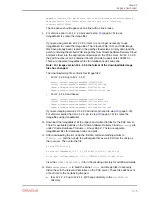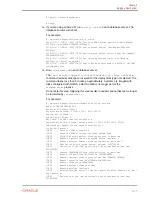
Table 5-69 (Cont.) ISO Images for 12.1.2.1.1
Version
Type
Edelivery Part /
Notes
ARU Bug #/ULN
Channel
Description
12.1.2.1.1
DB ISO image and
md5sum:
39f12722cb338b2d4
de5acba90adf8fe
compute_12.1.2.1.1_
LINUX.X64_150316.
2-1.x86_64.iso
Refer to 12.1.2.1.1
Readme (Doc ID
1959143.1) as well
as the readme
provided with the
download.
20757974
Oracle Database
Machine Database
Host (X4-8,
X4800M2, X4800,
X5-2, X4-2,
X4170M3, X4170M2,
X4170) Image 12c
Release 1
(12.1.2.1.1) for Linux
x86_64
To prepare a new Exadata system for deployment using ISO images, perform the
following steps:
1.
Obtain the latest Oracle Exadata Deployment Assistant (OEDA).
2.
Run the OEDA configuration tool to generate the configuration files. You will need
the configuration files when you run
applyElasticConfig.sh
later.
3.
Power on all the servers.
a.
Database nodes and cells will automatically assign to themselves unused IP
addresses on eth0 in the 172.16 range.
b.
Host names of the nodes will be of the format
nodeN
, where N is a number.
4.
After booting from the ISO, follow the prompts and imaging will start automatically.
You will be prompted to enter IP addresses.
You can use a
preconf.csv
(page 5-68) to mount the image on an NFS repository. You need to place
the
preconf.csv
file in the same NFS directory.
5.
If you are using Oracle VM, run
switch_to_ovm.sh
on each database server. The
database servers will reboot.
For example:
# /opt/oracle.SupportTools/switch_to_ovm.sh
2014-12-07 11:58:36 -0800 [INFO] Switch to DOM0 system partition /dev/VGExaDb/
LVDbSys3 (/dev/mapper/VGExaDb-LVDbSys3)
2014-12-07 11:58:36 -0800 [INFO] Active system device: /dev/mapper/VGExaDb-
LVDbSys1
2014-12-07 11:58:36 -0800 [INFO] Active system device in boot area: /dev/mapper/
VGExaDb-LVDbSys1
2014-12-07 11:58:36 -0800 [INFO] Set active systen device to /dev/VGExaDb/
LVDbSys3 in /boot/I_am_hd_boot
2014-12-07 11:58:36 -0800 [INFO] Reboot has been initiated to switch to the DOM0
system partition
6.
Run
reclaimdisks.sh
on each database server.
The
/opt/oracle.SupportTools/reclaimdisks.sh -free -reclaim
command reclaims
disk space reserved for the deployment type not selected. The command takes
less than 5 minutes, approximately. Systems are imaged with disks configured
with RAID5; a RAID rebuild is no longer part of the
reclaimdisks.sh
process.
Chapter 5
Imaging a New System
5-63






























